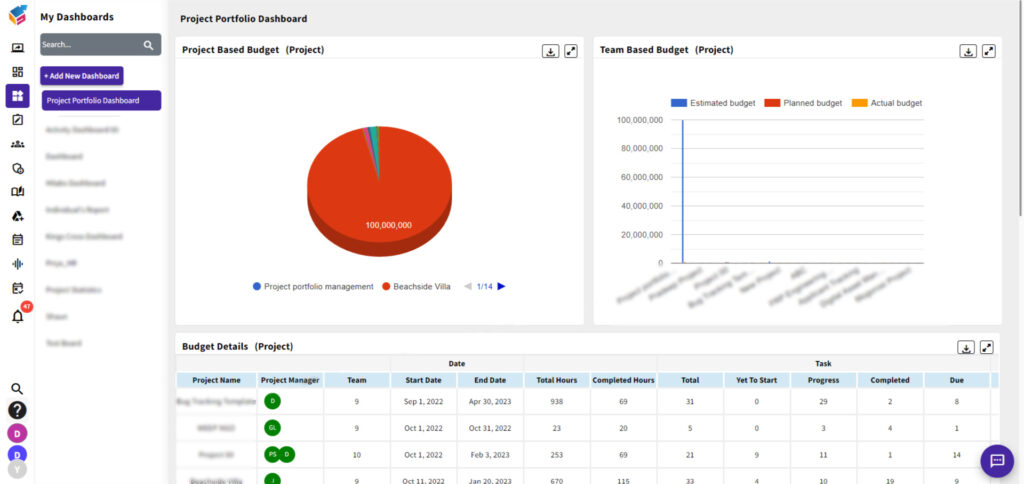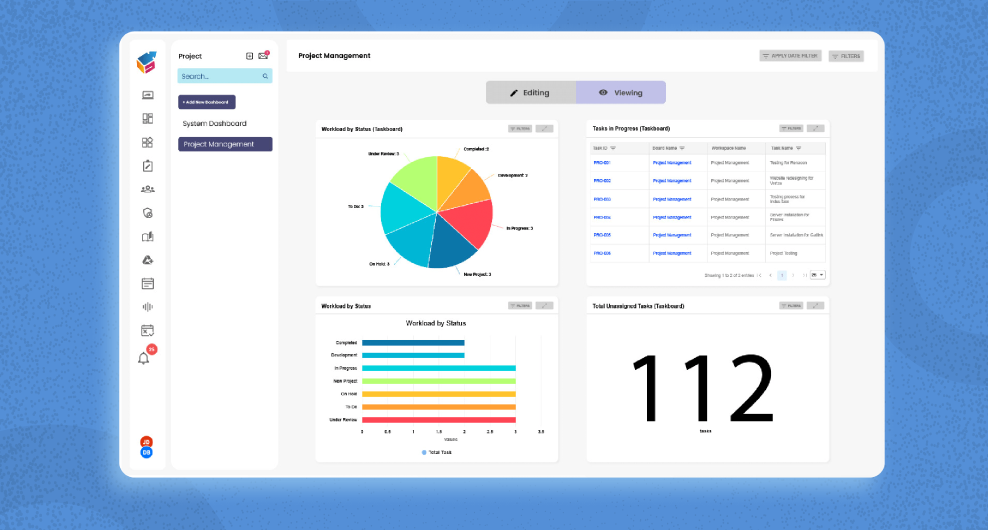Table of Contents
Understanding the potential pitfalls that can arise during a project is crucial for project managers in ensuring their team’s success. Consider a scenario where project stakeholders suggest developing a new app without considering the associated time and resource requirements. For success, grasp project risk management, risks, risk management plan, project schedule, project tracking tools, project phases, and risk assessment. Consider a scenario where stakeholders propose a new app without considering time and resource requirements. Such oversight can lead to failure. Familiarizing yourself with project risks ensures realistic objectives and effective project steering. In this guide, we explore seven prevalent risks in project assessments.
How do you define Project Risk?
Project risk is the potential uncertainties or events that can have a negative impact on the successful completion of a project, leading to deviations from the desired outcomes. These risks arise from various sources, such as internal factors within the project, external influences, or inherent complexities associated with the project’s objectives, stakeholders, resources, scope, schedule, and technology.
Project risks can manifest as delays, cost overruns, quality issues, scope changes, stakeholder dissatisfaction, legal and regulatory non-compliance, resource constraints, or any other factor that hinders project progress or compromises its ultimate success. Managing project risks involves identifying, assessing, prioritizing, and developing strategies to mitigate or minimize their potential impact, ensuring project objectives are achieved effectively and efficiently.
What are the Major Project Risks and How to Prevent Them?
There are several major project risks that project managers should be aware of and take steps to prevent. Here are some common project risks and strategies to avoid them:
- Scope Creep: Clearly define the project scope and objectives from the start. Establish a change management process to evaluate and approve any scope changes, ensuring they align with project goals.
- Unrealistic Timeframes: Conduct thorough project planning and estimation, considering all relevant factors. Break down the project into smaller tasks and create a realistic timeline. Account for contingencies and buffer time to accommodate unexpected delays.
- Inadequate Resource Allocation: Conduct a comprehensive resource assessment to identify the necessary skills, expertise, and equipment required for the project. Allocate resources effectively, considering their availability and workload. Regularly monitor resource utilization and adjust as needed.
- Poor Communication: Establish clear communication channels and protocols within the project team and with stakeholders. Encourage open and transparent communication. Foster a collaborative environment where issues can be addressed promptly, preventing miscommunication and misunderstandings.
- Lack of Stakeholder Engagement: Identify and engage key stakeholders early in the project. Understand their expectations, concerns, and requirements. Maintain regular communication with stakeholders throughout the project lifecycle to ensure their involvement and address any issues promptly.
- Insufficient Risk Management: Implement a systematic risk management process. Identify potential risks and assess their impact and probability. Develop mitigation strategies to address high-priority risks. Regularly monitor and review risks throughout the project, adjusting mitigation plans as necessary.
- Inadequate Quality Control: Implement robust quality control measures to ensure project deliverables meet the required standards. Define quality criteria and conduct regular inspections and tests. Address any quality issues promptly to prevent rework or customer dissatisfaction.
- Lack of Change Management: Anticipate and plan for changes that may arise during the project. Establish a change management process to assess and approve changes systematically. Communicate changes effectively to the project team and stakeholders, ensuring everyone is aligned.
- Dependencies on External Factors: Identify external factors that could impact the project, such as regulatory changes, market conditions, or supplier dependencies. Evaluate the potential risks associated with these factors and develop contingency plans to minimize their impact.
- Inadequate Project Monitoring and Control: Implement robust project monitoring and control mechanisms. Regularly track project progress, compare it against the planned schedule, budget, and quality targets. Implement corrective actions promptly to address deviations.
By being proactive in identifying and addressing these major project risks, project managers can significantly increase the chances of project success and minimize potential negative impacts.
How Can You Avoid Risks in the First Place?
To avoid risks in the first place, project managers can take several proactive measures during the project planning and execution phases. Here are some strategies to help prevent risks:
- Thorough Project Planning: Invest time and effort in comprehensive project planning. Clearly define project objectives, scope, deliverables, timelines, and resource requirements. Identify potential risks and develop strategies to address them proactively.
- Risk Identification and Assessment: Conduct a systematic risk identification process, involving key stakeholders and subject matter experts. Assess each identified risk in terms of its potential impact, likelihood, and urgency. Prioritize risks based on their significance to the project.
- Stakeholder Engagement: Engage key stakeholders early in the project and maintain regular communication throughout. Understand their expectations, concerns, and requirements. By involving stakeholders from the beginning, you can better align project goals and mitigate risks related to stakeholder satisfaction.
- Collaborative Team Environment: Foster a collaborative and open work environment within the project team. Encourage team members to share their insights, concerns, and suggestions. Promote effective communication and knowledge sharing to identify and address risks collectively.
- Resource Planning and Allocation: Conduct a thorough assessment of required resources, including personnel, equipment, and materials. Allocate resources effectively, considering their availability, skills, and workload. Avoid overloading resources or relying on scarce resources that may hinder project progress.

- Risk Mitigation Strategies: Develop proactive risk mitigation strategies for high-priority risks. These strategies may include contingency plans, alternative approaches, redundancy measures, or preventive actions. Implement these strategies early to minimize the impact of potential risks.
- Change Management: Establish a formal change management process to evaluate and approve any changes to project scope, requirements, or deliverables. Carefully assess the impact of proposed changes on project timelines, resources, and objectives. Avoid ad-hoc changes that can introduce unnecessary risks.
- Regular Monitoring and Control: Implement robust project monitoring and control mechanisms. Regularly track project progress, compare it against the planned targets, and identify any deviations or risks. Implement timely corrective actions to address issues and keep the project on track.
- Continuous Risk Review: Regularly review and reassess identified risks throughout the project lifecycle. New risks may emerge, or the impact of existing risks may change. Stay vigilant and adapt risk mitigation strategies accordingly.
- Lessons Learned and Knowledge Sharing: Capture lessons learned from previous projects and share them within the organization. Leverage past experiences to identify recurring risks and develop preventive measures. Encourage knowledge sharing among project teams to avoid repeating past mistakes.
By implementing these preventive strategies, project managers can minimize the likelihood and impact of risks, promoting a more successful and smooth project execution. However, it’s important to remember that risks cannot be eliminated, so having contingency plans and a flexible mindset is crucial to effectively manage unexpected situations.
Yoroproject Can Help You Manage and Prepare for Project Risks
Yoroproject is a project management software that can indeed help you manage and prepare for project risks.

Here are some ways Yoroproject can assist you in risk management:
- Risk Identification: Yoroproject provides a centralized platform where you can document and track project risks. You can create risk registers, capture details of identified risks, and categorize them based on their impact and likelihood. This allows you to have a clear overview of potential risks associated with your projects.
- Risk Assessment and Prioritization: Yoroproject enables you to assess the impact and likelihood of each identified risk. You can assign risk ratings, define risk mitigation strategies, and set priority levels. This helps you prioritize risks and allocate resources and efforts accordingly.
- Risk Mitigation Planning: With Yoroproject, you can create risk mitigation plans for high-priority risks. These plans outline the specific actions and measures to be taken to minimize the impact of identified risks. You can assign responsible team members, set deadlines, and track the progress of risk mitigation activities.
- Collaboration and Communication: Yoroproject facilitates collaboration and communication among project team members, stakeholders, and clients. You can share risk-related information, updates, and mitigation strategies with relevant stakeholders. This ensures everyone is informed and aligned regarding project risks and their management.
- Monitoring and Tracking: Yoroproject allows you to monitor and track the progress of risk mitigation activities in real-time. You can set up automated reminders and notifications to keep stakeholders informed about upcoming risk-related tasks and deadlines. This helps you stay on top of risk mitigation efforts and take timely actions.
- Reporting and Analytics: Yoroproject provides reporting and analytics features that allow you to generate risk-related reports and visualize project risks through charts and graphs. This helps you gain insights into the overall risk profile of your projects and make informed decisions based on the available data.
Overall, Yoroproject can serve as a valuable tool to streamline and enhance your risk management processes, improving your ability to identify, assess, mitigate, and monitor project risks effectively.
By leveraging its features, you can enhance collaboration, increase transparency, and better prepare your team for potential risks, thereby increasing the chances of project success.




